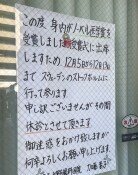Grain Wars
Food manufacturer Nong Shim announced that it will raise prices of its popular instant noodles and snacks. Starting from today, the prices of Shin Ramen, its most popular brand, Jjapageti (noodles with stir-fried bean paste) and shrimp snack Saewookkang would each be increased by between 11 and 15 percent. Soft drink makers have also announced plans to raise prices of soda and fruit juice drinks.
Import prices in dollar currency terms jumped 35.8 percent last December from a year earlier, while consumer prices in January rose an average of 2.9 percent on a year-over-year basis.
However, the average monthly income per household last year rose a mere 2.5 percent. Faced with skyrocketing consumer price hikes, fueled by record grain prices worldwide, housewives and consumers are concerned and tightening their purse strings.
On Feb. 14, an estimated ten thousand citizens and labor workers demonstrated in front of the presidential palace in Jakarta, the capital of Indonesia. They took to the streets after food manufacturers closed their factories due to a surge in bean prices. The price of beans jumped by 50 percent this year following a 125 percent hike last year.
The New York Times reported, High inflation of food and grain prices has spurred protests and rallies across the world.
The United Nations Food and Agriculture Organization (FAO) warned that the food price index of about 60 food materials, based on export prices, had jumped to 37 percent last year from a 14 percent increase in 2006.
This global food scarcity can be attributable to China and India, who are devouring grain and food resources thanks to their rising income levels. The average Chinese is said to have consumed 50 kg of meat in 2006, up from the 20 kg of meat consumed in 1985.
The two emerging powerhouses have restricted food and grain exports in an attempt to ease their food shortage. Russia has imposed a 30 percent export tariff on barley and a 10 percent export tariff on wheat last November. Meanwhile, Ukraine also put export limits on wheat, maize and beans last year. Another problem lies in climate change. Last year, Australia saw its wheat production rapidly dropped from 25 million tons to 9.8 million tons.
The bio industrys utilization of grain resources has also led to the hike in grain price. The U.S. is reported to have consumed a third of maize production for bio-fuel.
Samsung Economic Research Institute (SERI) recently released a report warning of food and grain shortages in Korea.
Koreas food and grain self-sustenance rate stood at 28 percent, ranking third from last among OECD member countries last year. In order to secure stable agricultural products, the government needs to come up with ways to secure overseas farming areas, similar to securing oilfields abroad. Wasted food, which account for a third of total food production, also should be reduced.
Editorial Writer Huh Mun-myeong, angelhuh@donga.com
Headline News
- South Korea’s migrant population surpasses five percent
- U.S. acting ambassador affirms joint exercises with South Korea
- China and Japan escalate dispute over naval radar incident
- Uptempo claims D3 Seoul basketball championship convincingly
- Democratic Party pushes insurrection court despite opposition warnings







